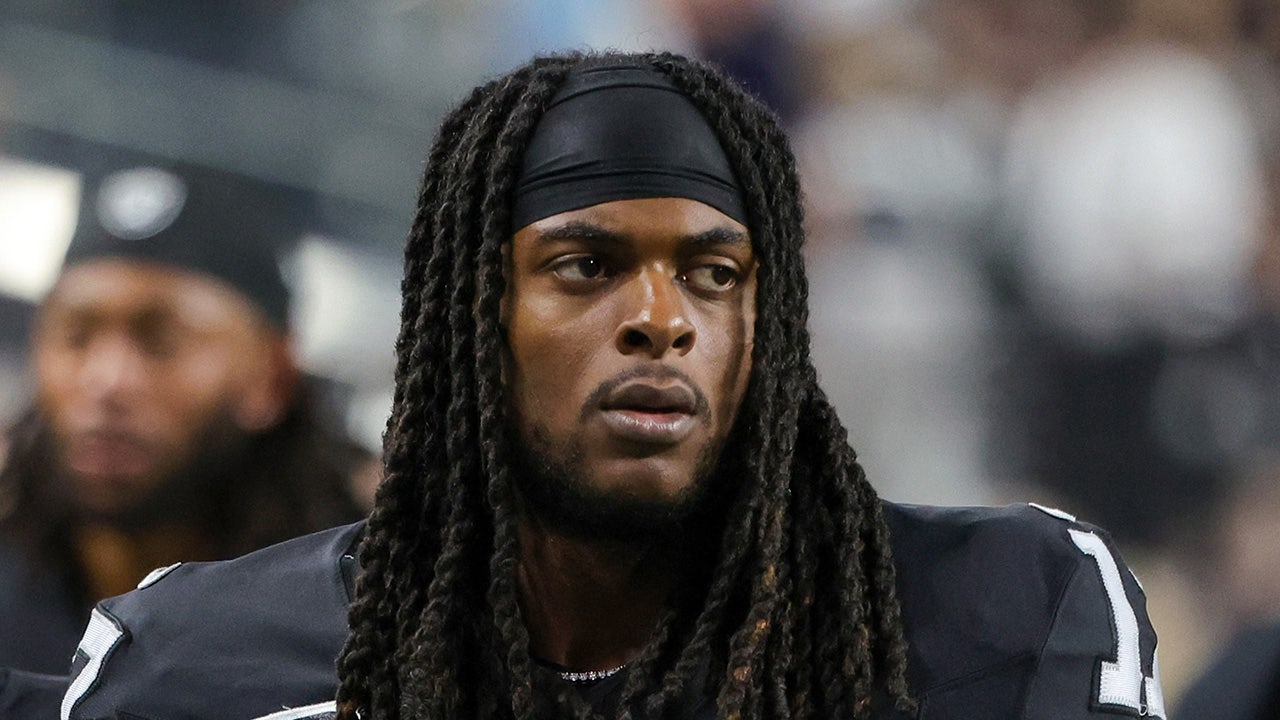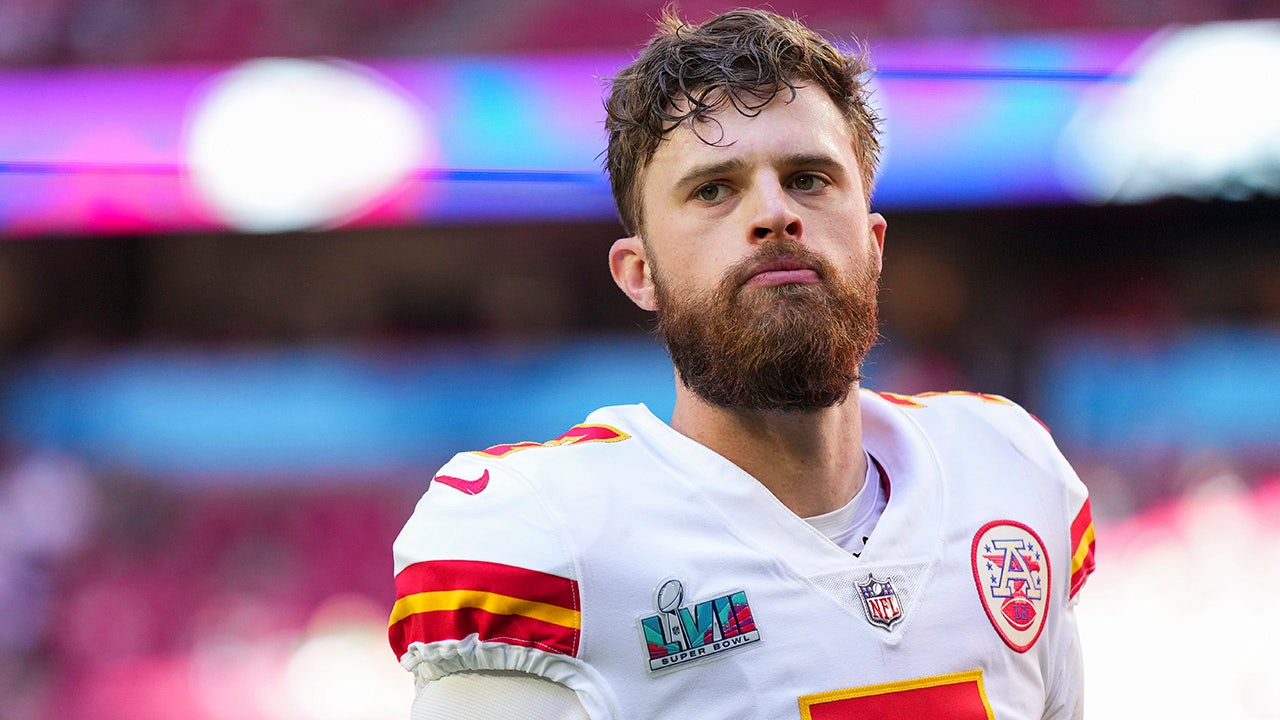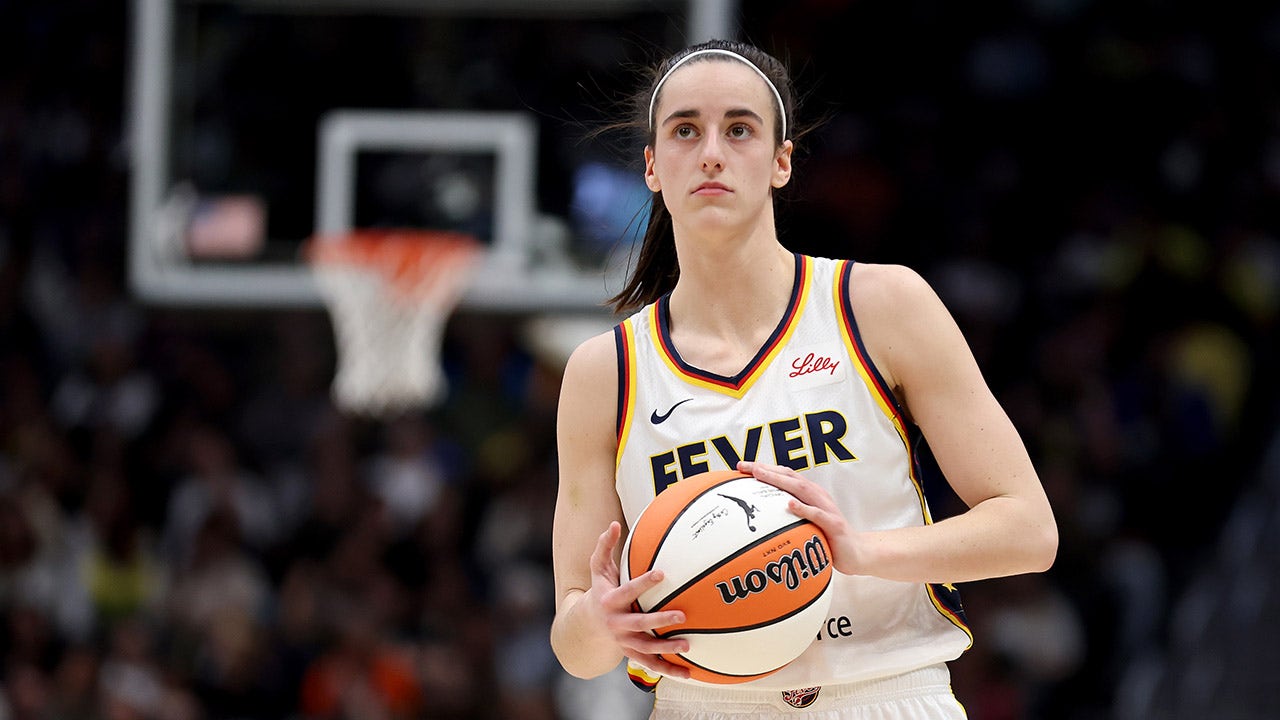The crowd was roaring like it’d just seen a knockout in a heavyweight fight.
But this was not that. It was Week 1 of the 2018 season, and the New York Jets were at Ford Field in Detroit to play the Lions. The matchup was highly anticipated, a prime-time game on national television, because of the Jets’ new quarterback.
Wearing a white jersey with dark green trim, Sam Darnold crouched under center, turned his head and looked left down the line of scrimmage. He tapped his left foot backward. Once receiver Quincy Enunwa motioned across the formation, Darnold’s voice pierced the crowd noise.
“Ready, set!”
Immediately, the ball was snapped. Darnold faked a handoff and bootlegged to the right, focusing his eyes near the right sideline. A Lions pass rusher wiggled past his blockers and chased Darnold, who climbed forward, surveyed the field from right to left, reset his feet and launched a pass diagonally across his body back to the left.
The ball floated for what felt like an hour. It lingered long enough for Lions safety Quandre Diggs to stop backpedaling and sprint forward. Diggs snatched the ball out of the air for an interception, then raced the other way 37 yards for a touchdown.
The camera panned to the raucous crowd, mostly clad in Honolulu blue, and liquids spouted from cups into the sky. A horn resembling a freight train sounded through the stadium speakers. The camera then found Darnold, who gazed up at the video board for a replay and, for a second, presented such a self-deprecating facial expression that he looked like he might laugh.
The play and what happened after have a chance to be emblematic of Darnold’s entire career.

Sam Darnold looks on during that fateful first game against the Detroit Lions in 2018. (Joe Robbins / Getty Images)
So what happened after? Darnold reached the sideline and felt the muscles in his arms, which had felt like taut bungee cords, loosen. Well, it can’t get worse than that, he thought, then proceeded to complete 16 of his next 20 passes for 198 yards and two touchdowns en route to a 48-17 victory. It was a preposterous amount of adversity, then an inspiring response.
To this point, though, Darnold’s career contains much more of the former.
Still only 27, Darnold’s chance at turning the tide might ultimately hinge on his current opportunity. The Minnesota Vikings signed him to a one-year, $10 million contract this offseason, thinking he still has untapped potential but needs the right environment after three seasons with the Jets, two with the Carolina Panthers and one year behind Brock Purdy in San Francisco.
Minnesota’s skill players are exceptional. The play-action, rhythm-and-timing-oriented offense suits Darnold well. Throw in the deep bond between Darnold and Vikings quarterbacks coach Josh McCown, and the optimism sweeping the TCO Performance Center hallways makes sense.
But Darnold’s window of opportunity may not be open for long. This spring, the Vikings drafted Michigan quarterback J.J. McCarthy (who suffered a season-ending meniscus injury) to be their quarterback of the future. That plan remains, meaning Darnold’s 2024 season could be a de facto tryout to start elsewhere in 2025.
Still, many of Darnold’s former teammates and coaches are paying close attention. For one, they’re rooting for a guy who seems to be universally liked. But they also think Darnold’s story represents a broader issue: why so many top college quarterbacks fail in the NFL.
“Even the highly drafted guys need the perfect cocktail a lot of times for them to shine,” said former Jets center Jonotthan Harrison, “and very few of them get a sip of it.”

GO DEEPER
Why Sam Darnold is a vital piece of the Vikings’ draft plans at quarterback
The night before the first round of the 2018 NFL Draft, Jets staffers swiveled in their chairs in Florham Park, N.J., tapping away at their phones for intel. Multiple agents and rival team executives provided the same tidbit: that the Cleveland Browns were leaning toward Baker Mayfield with the No. 1 pick.
Some of the Jets scouts preferred Mayfield to Darnold. Others liked Darnold. Even those who wanted Mayfield agreed: Darnold was a safer bet.
The Jets had studied every aspect of these quarterbacks’ backgrounds for more than a year. They knew Darnold’s mother was a P.E. teacher at Shorecliffs Middle School in San Clemente, Calif. They knew Darnold’s father oversaw the plumbing at several medical facilities in Orange County. They knew Darnold’s grandfather, Dick Hammer, was a part-time actor who played the role of the Marlboro Man on billboards.
Jets executives attended Darnold’s rainy pro day. At the combine, they peppered him with questions about the New York media environment. He was not a perfect prospect — many flagged his tendency to turn the ball over — but he was young and easy-going. Several on the Jets staff joked he was a Southern California native with a Midwestern vibe. Late nights? Tabloid-filled headlines? No, sir. Just hard work.
On draft night, Cleveland proved the Jets’ intuition correct. The Browns took Mayfield, leaving Darnold to Gotham. The Jets’ executives and coaches collectively cheered the pick, which, mind you, is not always the case. After one of Darnold’s first practices, coaches and executives filled a meeting room and settled into their chairs. One of the coaches blurted out, “This guy is going to be pretty damn good.”
“I remember us talking about it, like, it’s so easy for him out on the field,” said Jimmie Johnson, then the Jets’ tight ends coach.
The early impressions traveled upstairs and reached ownership, which had already created a troubling dynamic. It was widely known internally that the coaches, including head coach Todd Bowles, needed to win to keep their jobs. But the staff knew that for as impressive as Darnold looked, and as much as ownership and the fan base wanted Darnold to play, he needed time to develop.
This created a dilemma: Do right by the kid? Or appease the bosses and the fans?
“Just because you’re drafted high doesn’t mean you’re ready to play,” Johnson said. “It just means you were drafted high because of your potential. But everything has to be instant in the NFL … and in the world.”
Darnold started in Week 1, threw the interception on his first pass and responded well. But in the ensuing weeks, his performance oscillated. The Jets had a subpar offensive line and an unimpressive receiving corps. Darnold threw three interceptions in an October matchup against Minnesota. Several weeks later, he threw four picks in Miami and sprained his foot. At that point, the Jets were 3-6.
When he injured his foot, Darnold was able to sit and learn from NFL journeyman McCown, a confidant who was then his backup. Walk past the quarterback meeting room late at night that season, and they were likely in there together, chatting about defensive structures and scribbling notes about where to throw and why. Their relationship kept Darnold afloat through the early shakiness, and when he returned in Week 14, he pieced together an effective four-game stretch, completing 64 percent of his passes and producing a 6:1 touchdown-to-interception ratio.
It was not enough to save Bowles’ job. He was fired at the end of the season, and the Jets replaced him with longtime offensive coordinator Adam Gase. When the news first surfaced, many of Gase’s former players, including Peyton Manning, publicly stated their belief in Gase as a top-notch offensive mind. A bolt of excitement flowed through the facility. Here was the perfect person to help Darnold fulfill his promise.

During his time with the Jets, Darnold developed a close relationship with backup quarterback Josh McCown, who is now his QB coach in Minnesota. (Patrick McDermott / Getty Images)
It did not play out that way for the 2019 Jets.
“No joke,” said Ryan Griffin, a longtime NFL tight end. “I would come home and be like, ‘More (crazy) Jets stuff today.’ We just had no direction.”
By August of Darnold’s second season, the initial excitement surrounding Gase’s hiring had faded. Seemingly everyone clashed with everyone: coaches, players, executives, even the training staff. Griffin had previously played for the Houston Texans and felt for players like Darnold who were dropped into the environment randomly.
“I just always felt I needed to help him out because it felt like he felt he had to do it all himself,” Griffin said. “That’s just not a recipe for success and growth.”
Then there was the subject of Gase’s offense. Five of his former players who spoke to The Athletic for this story agreed: Gase is a smart football mind. The issue lay in uploading those smarts to a second-year quarterback who was still only 21 years old. Gase was constantly hunting for the perfect play. This meant a bevy of motions and shifts, which meant lengthier verbiage for Darnold to spit out, which meant more time in the huddle.
“They were trying to fit a square peg in a round hole,” Harrison said. “I’m not saying the offensive philosophy at that time was garbage. It’s nothing negative. But it wasn’t for Sam.”

Adam Gase’s offense with the Jets was not particularly well suited to Darnold’s strengths. (Steven Ryan / Getty Images)
Center Ryan Kalil had played 12 NFL seasons in Carolina before that year. The Jets signed him as a backup, and on the practice fields in Florham Park, he quickly realized how much he’d taken system continuity for granted. He thought the longer he played, the easier it’d be to pick up any scheme. He was wrong.
The experience also fostered a deeper appreciation for the way the Panthers coaching staff had responded after drafting Cam Newton. They studied Newton’s Auburn tape, identifying the passes Newton read well and the plays where he appeared most comfortable. They played to his strengths. Newton benefitted from something totally out of his control.
“There’s so much luck that goes into this game,” Kalil said. “People don’t realize it. Lots of guys ended up being busts, and the biggest reason was because they were unlucky. They weren’t in the right system. They didn’t have the right coach. And vice-versa. Like, for every Tom Brady story, there’s a whole bunch of guys you never heard of.”
All of it affected Darnold. His sinuses flared up early in the season and his energy waned. He was diagnosed with mononucleosis. When he returned, he threw four interceptions against the New England Patriots and exited the game to find that a microphone had picked up a comment he made on the sideline: “I’m seeing ghosts.”
In the back half of the season, at the urging of offensive coordinator Dowell Loggains, the Jets simplified their passing concepts and leaned into more no-huddle. Behind Darnold, New York won six of its last eight games.
Darnold’s success did not carry over into 2020, however, and after a 2-14 season, the Jets traded him to Carolina. In his introductory news conference, he thanked the Jets for the opportunity and shouldered his own struggles. He spoke excitedly about the potential of a fresh start with the Panthers.
Yet familiar issues soon arose.
A few weeks after the Panthers added Darnold, former quarterback and 2002 NFL MVP Rich Gannon received a phone call from then-Panthers head coach Matt Rhule, who wanted to talk about his new signal caller. Gannon, who himself had gone from castoff to first-team All-Pro, had never met Darnold. But Rhule wondered if Gannon, in watching Darnold, saw a bit of himself.
“There’s a lot to like there,” Gannon told Rhule. “He’s athletic. He’s got good feet. He can extend plays. Big, live arm. Toughness.”
Rhule connected Gannon with Darnold so he could offer up his backstory as a vision for what Darnold could become.
Gannon relayed to Darnold how he’d begun his career in Minnesota and how his first couple of head coaches, Jerry Burns and Dennis Green, treated him poorly. Not until Jon Gruden’s car picked him up at the Oakland International Airport did Gannon feel like a coach truly believed in him.
The first day at the Raiders’ facility in Gruden’s offense, Gannon heard the words, “You’re my guy. We can do great things together.”
“It was the only time I felt that in my career,” Gannon said. “And you can feel that.”
Darnold’s first season in Carolina got off to a great start. The Panthers won their first three games as Darnold completed 68 percent of his passes and averaged 304 passing yards a contest. In Week 3, though, superstar running back Christian McCaffrey injured his hamstring, and the wheels began to fall off.
Darnold threw two interceptions in Week 4 against the Cowboys, three the following week against the Eagles and another in Week 6 against the Vikings.
“The weight starts to feel like it’s on his shoulders,” said one former Panthers staffer who requested anonymity to speak freely about Darnold’s experience in Carolina, “and people internally are starting to ask questions: ‘Why’s he not throwing the ball downfield? Why is the offense not explosive?’”

Coach Matt Rhule tried to cater the Panthers offense to what Darnold did well. (Jim Dedmon / USA Today)
The Panthers implemented a different approach in Week 8 against the Falcons. Darnold went just 13-of-24 passing for 129 yards but ran eight times for 66 yards, which spurred Carolina to a gritty win but also led to a shoulder injury.
Darnold didn’t practice the next week, but he played the following Sunday against the Patriots and threw three interceptions. He was then held out for the next six weeks as the shoulder healed. The Panthers finished 5-12, compelling Rhule to fire then-offensive coordinator Joe Brady and hire longtime NFL coach Ben McAdoo, who installed a system more similar to Jeremy Bates’ from Darnold’s rookie season.
Re-energized, Darnold met with McAdoo and dedicated himself to a rigorous offseason training regimen focused primarily on footwork and eye placement. During this process, the Panthers traded for quarterback Baker Mayfield, which many saw as a sign of their lack of belief in Darnold.
“You can say what you want,” the former Panthers staffer said, “but it wasn’t a fair competition. Signing a guy like that right before camp? We knew. Sam knew. And he didn’t bitch one time.”
Darnold sprained his ankle in the final preseason game, cementing the Panthers’ decision. But Mayfield struggled, and by Week 12, the coaches turned back to Darnold. McAdoo called the resulting six-game stretch, in which Darnold went 4-2, “some of the most fun I’ve had coaching football.”
In Week 17, Tom Brady erased a double-digit fourth-quarter deficit, essentially ending the Panthers’ season and Darnold’s time in Carolina. Darnold entered free agency, where he chose to move to one of the most trusted quarterback environments in the NFL in San Francisco. He spent a season behind the scenes there and surfaced this offseason in a similarly well-regarded infrastructure.
“I just believe in him,” McCown said. “I saw it. I know what he’s dealt with. He’s been through the wringer.”

Darnold was very hit or miss during his two seasons in Carolina. In 17 games as a starter, he went 8-9 and threw for 3,670 yards with 16 touchdowns and 16 interceptions. (Sarah Stier / Getty Images)
In May, during an otherwise ho-hum news conference at the Vikings’ practice facility, a reporter asked Darnold a question: What did you find out about being a young quarterback in the NFL that’s hard to understand if you’re not in that position?
Darnold listened and nodded.
He looked away, then back at the reporter and deadpanned: “Umm … I mean … How much time you got?”
The reporter laughed, which made Darnold laugh. He looked away again, then back at the reporter and said, “No, it’s a great question,” before offering a general answer. Darnold remained positive, didn’t throw anybody under the bus and moved on.
Even this is part of the NFL apparatus that contributes to young quarterbacks failing.
“We’re all glorified German shepherds in the NFL,” Harrison said. “We have to be loyal. Because if you’re not loyal to the team you’re on and if something were to slip out or you speak up, that could be your career. We’re almost sworn to secrecy if we want to get paid.”

GO DEEPER
How NFL journeyman Josh McCown is a key facet of the Vikings’ QB development plan
Players take coaching, even bad coaching, so as not to be seen as uncoachable. They portray a sense of being bulletproof, even when they’re struggling internally, to avoid being seen as weak. Narratives are often devoid of this context, breeding laziness.
“It’s just easier to say, ‘Well, he’s bad,’” McCown said. “But you don’t really know.”
This is not to say that Darnold is faultless. In private conversations with former coaches, he would chide himself for his turnover frequency. Some of his former coaches admit that Darnold’s processing speed is lacking at times. But while that may be a hindrance, they also agree it’s on the coaching staff to construct a play style and strategy that suits Darnold’s athletic traits and feel.
Maybe that means implementing more half-field reads. Maybe it means leaning heavily into boot-action plays that allow Darnold to use his athleticism. McAdoo did that in Carolina. Gase, with the Jets, did not. Vikings head coach Kevin O’Connell likely will.
That’s how this would end if it were a Disney movie: with Darnold finally taking a sip of the perfect coaching cocktail, and the whole world understanding the recipe. There’s the innate talent, yes, but a whole heck of a lot more.

Free, daily NFL updates direct to your inbox.
Free, daily NFL updates direct to your inbox.
Sign Up
(Top photo: David Berding / Getty Images)







